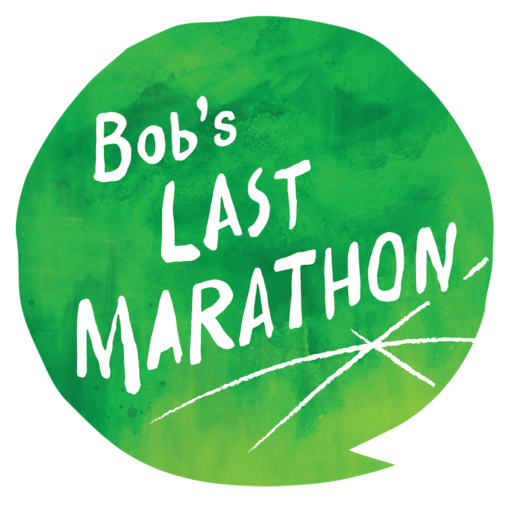Transcript
Care Team
Moments before Bob’s memorial service, looking over the crowd of family and friends, I caught sight of my daughter, Andrea, with her two children and her husband, Steve, who was watching the door. Suddenly, Steve shot from his seat to greet a new arrival. It was Thomas, one of Bob’s most beloved caregivers. As we had planned, Steve ushered Thomas to the empty seat in the front row, reserved for family.
Thomas is indeed family. Over the last six months of Bob’s life, Thomas barely left Bob’s side. He was one of several caring and knowledgeable members of the team who ran this last marathon with Bob and me. This care team, all professionals with specific areas of training, became Bob’s lifeline—and mine.
I knew little about Alzheimer’s care, but I did know this: I was facing a difficult and unmarked road, and I would need someone to help me navigate it. I didn’t need to go far to find Stephne, a care manager familiar with the issues confronting aging adults with dementia. She was referred by Vicki, director at an age-in-place community literally around the corner from my house. Stephne was my go-to consultant and confidante, a trusted sounding board who guided me and talked me through decisions I made for Bob, large and small. Should he start day care? Which day care centers should I check out? When should I start looking for home care help? Stephne anguished with me over whether I should keep Bob at home, or whether a long-term care facility would be better for Bob—and for me.
And when Stephne did finally recommend home care, it was possibly as much for me as it was for Bob. At that point, Bob was still what professionals would call “high-functioning.” He could still manage his day-to-day activities. He could still speak, read, and write. But we knew this would most certainly change. Before it did, Stephne knew it would help for me get used to the idea of someone else caring for Bob. So we started with home care twice a week for two or three hours.
Our first home care helper would mostly just chat with Bob and do some light housekeeping. Bob would say to me, jokingly, “So what time’s my babysitter coming today?” As Bob’s condition worsened, the home care visits became more regular. An aide would arrive when Bob came home from day care, and stay until I finished my work and was ready to make dinner. This schedule evolved into an early morning shift to help Bob get up, shower, and dress for the day—with the level of help increasing with Bob’s needs.
Stephne shepherded me through these transitions, and helped me screen for the right people at each stage. Were they willing to engage in conversation and activities such as walking, singing, painting, or solving puzzles? Would they be respectful of my rules—for example, not allowing TV watching until after dinner? Were they genuinely interested in caring? Bob and I were fortunate to settle down, eventually, with a superb team of compassionate home caregivers who stayed with us for several years. Miriam, a blessed soul with smiling eyes whom I connected with right at our first meeting, took the morning shift. Thomas, her nephew, came in the afternoon. Later, when Bob’s restricted mobility required someone to help lift him in and out of the wheelchair, Miriam had to relinquish her duties to Thomas.
Another central person on our team was Florence, the social worker and director at Rosener House, the wonderful day care center that Bob attended for five years. I so appreciated Florence’s clear, direct but compassionate assessments of Bob, and the support group she led for caregivers. Kathy, at the front desk, always made me feel as though Bob and I were the most important people ever to walk into their facility. I learned the importance of cultivating trusting, positive relationships with key people at day care; their close, professional watch on Bob kept me in touch with the inevitable changes in his condition, giving me the information I needed to respond in a timely way.
When Bob first signed up at Rosener House, he was still driving occasionally. With Florence’s wise guidance and gentle insistence, I found a driver to bring Bob, along with a few other attendees, to Rosener House. Jack drove a minivan and always wore a cowboy hat. He had a cheerful, upbeat personality, always starting Bob’s day with, “How are you doing, Champ?”
Knowing that exercise is integral to dementia care, and because Bob enjoyed being athletic all his life, I decided to add personal training to the group exercise he was doing at Rosener House. At first, Bob trained at the gym with Brian. After a time, he trained at home with Andre, an old friend. Andre was creative with exercise—they shot hoops at a neighborhood court and worked out at our local park. Even when Bob was in a wheelchair, Andre kept Bob’s exercise regimen going with arm weights.
Cognitive therapy was a part of Bob’s routine for about three years. The cognitive interventionists were typically students—young and dedicated—who brightened Bob’s day with their positive attitudes, engaging conversations, walks around the neighborhood, or strumming a guitar as the session began. Later, this would be replaced by art therapy. I will always remember Monique, the art therapist, who supervised Bob’s last paintings at the Alzheimer’s Association office in San Jose and later at our home, only five days before he passed away.
Alzheimer’s disease can take an emotional toll on caregivers, and couples. Stephne referred us to Kathy, our psychotherapist. Trained as a nurse, Kathy was a licensed psychotherapist specializing in helping families of people with dementia. She worked at a local hospital, where she ran support groups, and maintained a busy schedule with her private clients. Bob and I met with her every month until Bob was no longer able to manage the stairs to her office. I continue to meet with Kathy to this day.
The summer before Bob’s passing, his physical condition started to deteriorate. It began with his heart: valve disease that required surgery. Recalling his painful recovery after open-heart surgery 30 years before—when Bob was much younger and healthier—I decided against it. Then came a blister on his foot that turned into a wound infection that wouldn’t go away. During his third hospitalization for it, the surgeon discussed the option of amputation. That was when I was offered a consult with the hospice group. Thus began the last 352 yards of our marathon, and the introduction of the final member of Bob’s wonderful care team—a compassionate hospice nurse by the name of Elsa.
I was mentally prepared to make this difficult decision. From our past experiences with family, Bob and I were very clear about not wanting treatments just for the sake of extending life. Also, earlier that year, Bob’s doctor had scheduled a call with me to, as he said, “talk about existential issues.”
So I felt confident about discontinuing treatments that would require hospitalization and add to Bob’s discomfort. And with guidance from the hospice team, including a physician and a chaplain, and knowing Bob’s preference to stay home, I found home hospice to be an easy decision. This meant that, while Bob would be cared for at home, Elsa would visit regularly to check his vitals and care for his wound. Elsa painstakingly trained me to change Bob’s dressing on her off days. Incidentally, Elsa’s experience in caring for Bob motivated her to become certified in wound care. She completed her course work right before Bob’s passing.
My experiences with our extended family of caregivers taught me so much, practically and personally. I learned to recruit people who met my criteria and to act quickly if they proved disappointing; to trust people and be committed to building a relationship of mutual respect. I learned to let other people do what I thought was only a wife’s job—from personal hygiene to picking out the day’s outfit. I learned to share my home and my “turf,” the kitchen. In turn, the support I received nourished me emotionally, and allowed me to continue building my career and to take care of myself—while making sure that Bob’s days were as healthy and full as they could be.
Lena Chow Kuhar

